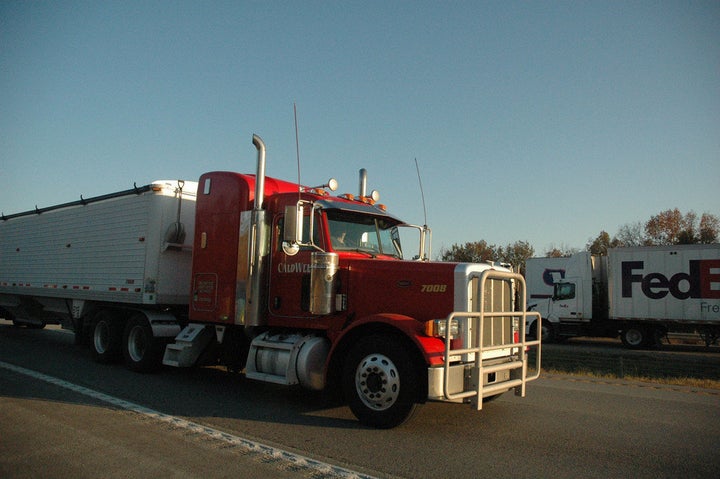
Obstructive sleep apnea, the disorder characterized by having pauses in breathing or shallow breathing while sleeping to create disrupted sleep, should be screened among obese commercial truck drivers with a body mass index of 35 or higher, concluded two government advisory panels recently.
For reference, Truckers News reported that a 6-foot-tall driver who weighs 258 pounds has a BMI of 35.
The proposal developed at the public meeting of the Motor Carrier Safety Advisory Committee and the Medical Review Board will be discussed again in the new year, where more detailed recommendations will be devised and finalized for presentation to the Federal Motor Carrier Safety Administration (FMCSA), according to Today's Trucking.
Today's Trucking reported that if the FMCSA decides to adopt the proposal, it would lead to guidance on what to do if a driver doesn't pass the screening test:
That guidance would include conditions for immediate disqualification of a driver, like falling asleep at the wheel or having fatigued-related crashes. It would also allow the driver to get a 60-day conditional card during evaluation and treatment for the condition.
Sleep apnea, which is more common in people who are overweight, can be dangerous while on the road because it leads to daytime drowsiness -- proving potentially fatal for both truck drivers and others on the road. There is even a sleep apnea page on the FMCSA website detailing the dangers of sleep apnea.
Todd Spencer, executive vice president of the Owner-Operator Independent Drivers Association, said that it's more likely that sleep-deprivation accidents occur among truckers more often because of just pure exhaustion than sleep apnea, Land Line, a professional truckers business magazine, reported. (The OOIDA is a trade association for professional drivers and independent owner-operators.)
"Does apnea result in very many crashes? Real accident analysis suggests it doesn't. It's going to be far more likely that somebody just didn't have the opportunity to get restorative sleep because that's not an easy thing for truck drivers to do," Land Line reported Spencer saying in the meeting. "Every day those who are on the road -- their struggle is to find someplace where they can stop and sleep. And where they won't get bothered, rousted and run out. Those things people need to do to maintain alertness we're discouraged from. Drivers don't set their own schedules; they work around everyone else's."
But Wanda Lindsay, of New Braunfels, Texas, knows the potential danger of sleep apnea firsthand. Lindsay and her husband's car was slammed from behind by an 18-wheeler truck last year while on the Interstate 30; the truck driver had previously been diagnosed with severe sleep apnea, the Austin American-Statesman reported. Lindsay's husband did not survive the accident.
Lindsay shared her story at the recent meeting, explaining that she didn't realize just how big of a danger sleep apnea could be before the accident occurred last year.
"If you could have seen the scene that killed my husband ... or any of the other scenes that have been tied to sleep apnea and truck wrecks, it does look like a war zone," she said during the public comment period of the meeting. "It looks like a truck suicide bomber had gone through the area when John was killed."
"How many more families have to be torn apart before we do something?" she added.
To hear Lindsay's full comment, click here and register to watch the webcasts of the meeting. Her comments are in the seventh video titled "Public Comment Period," at the 19:24 mark.